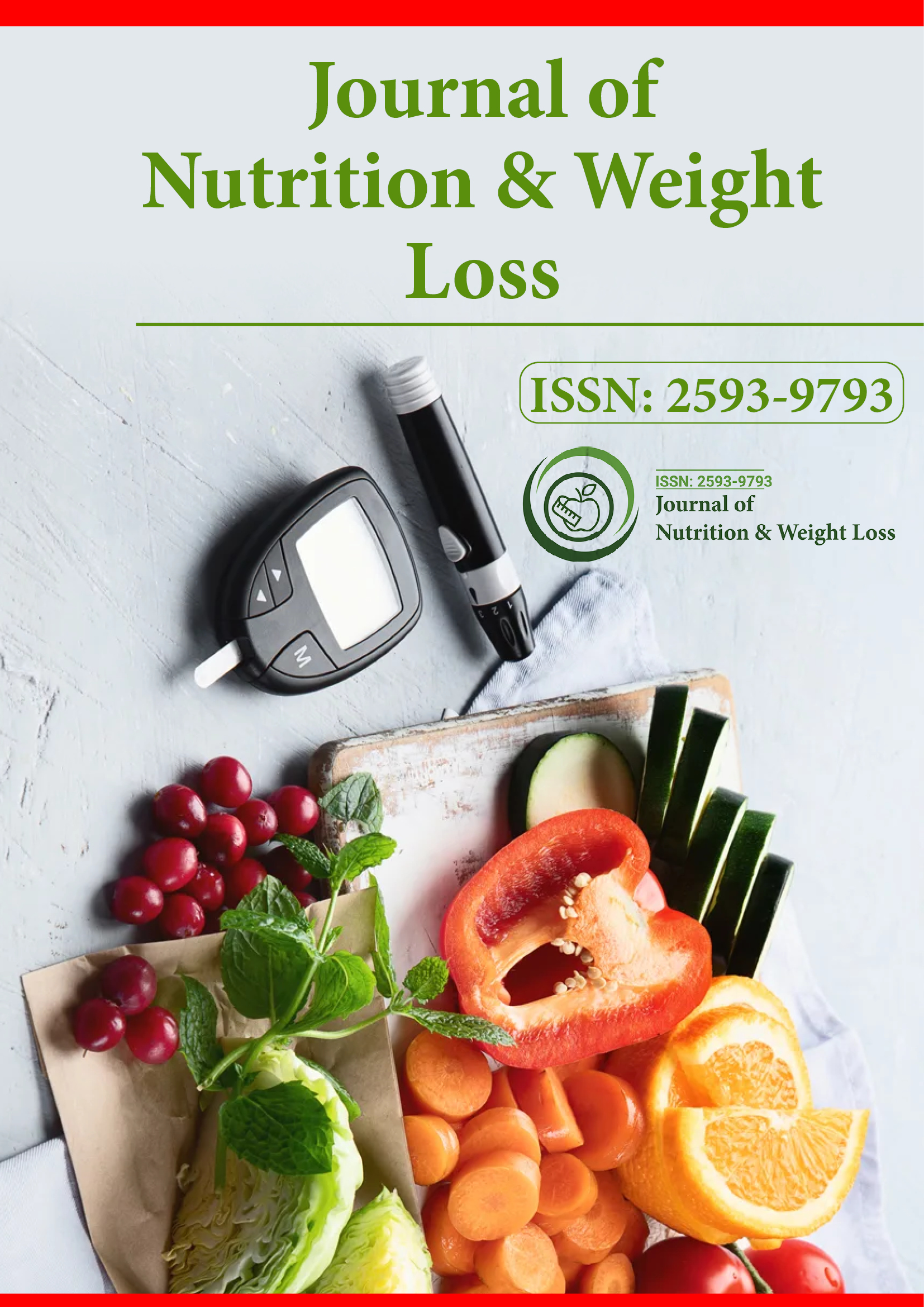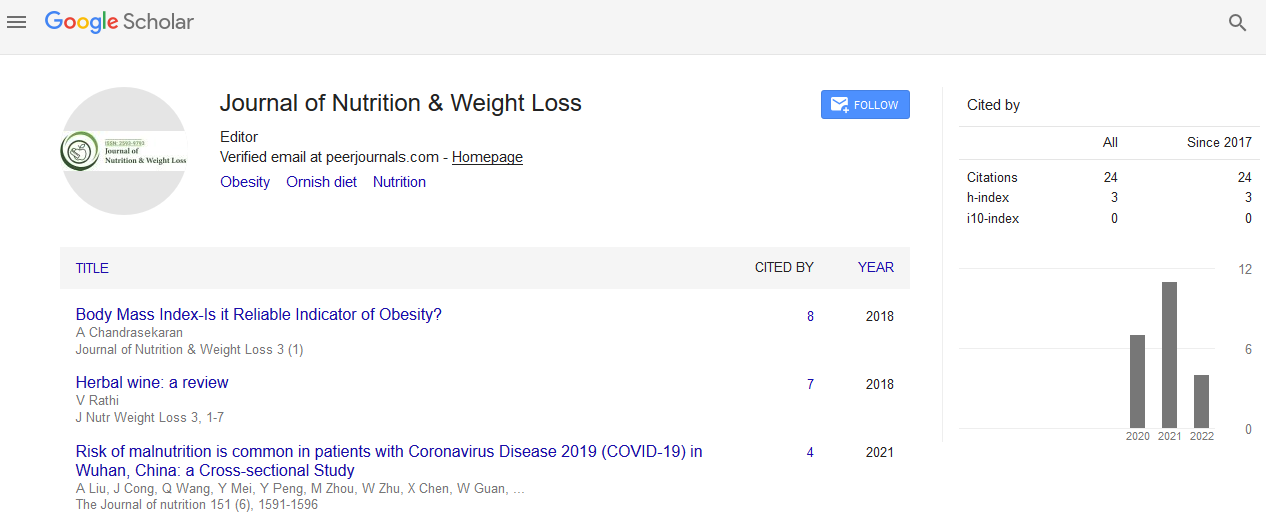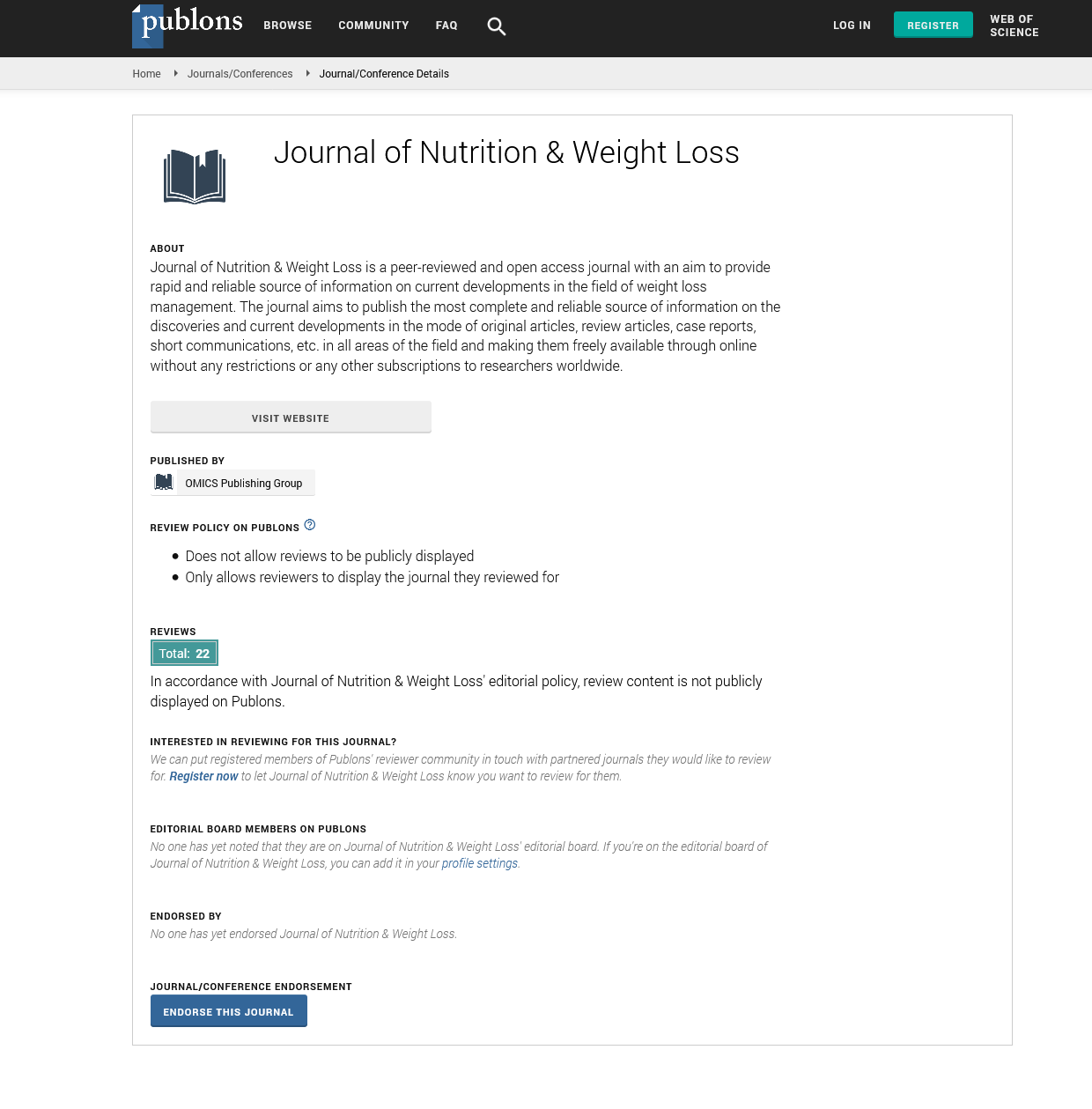Indexed In
- RefSeek
- Hamdard University
- EBSCO A-Z
- Publons
- Euro Pub
- Google Scholar
Useful Links
Share This Page
Journal Flyer

Open Access Journals
- Agri and Aquaculture
- Biochemistry
- Bioinformatics & Systems Biology
- Business & Management
- Chemistry
- Clinical Sciences
- Engineering
- Food & Nutrition
- General Science
- Genetics & Molecular Biology
- Immunology & Microbiology
- Medical Sciences
- Neuroscience & Psychology
- Nursing & Health Care
- Pharmaceutical Sciences
Opinion - (2021) Volume 0, Issue 0
Late Surveys on Food Allergy Prevalence
Nasser Salem Alqahtani*Received: 09-Sep-2021 Published: 30-Sep-2021, DOI: 10.35248/2593-9793.21.s3.138
Opinion
Significant quantities of youngsters and grown-ups report having immunoglobulin E-intervened food sensitivities. Be that as it may, producing precise food sensitivity commonness information is troublesome. Self-detailed information can misjudge commonness when contrasted and predominance gauges set up by more thorough techniques. Starting at 2004, in the United States, the Food Allergen Labelling and Consumer Protection Act ordered that the name ought to pronounce the wellspring of the food if the item contains that food or a protein-containing fixing from that food (not all proteins in a significant food allergen cause unfavourably susceptible responses) in the way depicted by the law. The 8 significant food allergens are milk, eggs, fish, scavanger shellfish, tree nuts, peanuts, wheat, and soybeans, normally alluded to as the "Huge 8." These 8 allergens are thought to represent 90% of the food sensitivity responses. As of late distributed enormous reviews of Americans and Canadian grown-ups and kids give significant knowledge into the predominance of hypersensitivity for the significant allergens. This information shows that there is a huge variety in predominance among the Big 8. The commonness of soy beans hypersensitivity is lower than the predominance detailed for every one of the other 7 significant allergens, which has been utilized to contend that soy could be eliminated from the Big 8 without gambling damage to people in general. Be that as it may, the energy gives off an impression of being supportive of growing the Big 8. The US Food and Drug Administration is assessing order of sesame seed as a significant allergen; it is now named a significant allergen in Canada, Australia, and Europe. Europe orders 14 food varieties as significant allergens. There might be some benefit to normalizing significant allergen records universally, despite the fact that it could be similarly critical to recognize contrasts in need allergens dependent on social and dietary inclinations. It is occupant upon wellbeing experts to help their patients and customers recognize food varieties to which they are hypersensitive and help in arranging slims down that are healthfully satisfactory in spite of end of these food varieties.
Regardless of the limits of phone overviews dependent on SR information, which probably misjudge commonness information, the 5 huge phone reviews depicted underneath that have been distributed inside the beyond 8 years give a premise to reaching determinations about the pervasiveness of food hypersensitivity among North Americans. The National Health and Nutrition Examination Survey (US NHANES) is an occasional overview led by the National Center for Health Statistics of the Centers for Disease Control and Prevention. The pervasiveness of SR food sensitivity was evaluated by a positive reaction to the inquiry, "Do you have any food hypersensitivities?" If the subjects addressed indeed, they were inquired, "What food varieties are you susceptible to?" with alternatives including hypersensitivities to wheat, cow's milk, eggs, fish, shellfish, corn, peanuts, different nuts, soy items, and different food varieties. A sum of 20 686 people were studied somewhere in the range of 2007 and 2010. A cross-sectional, list-helped, irregular digit-dial phone overview of US purchasers directed by the FDA (US FDA) known as the Food Safety Surveys (FSS) involved 4568 grown-ups (information for year 2010). The respondents were 18 years or more established. Members were posed a variety of the inquiry, "Do you presently have any food hypersensitivity or think that you have food sensitivity?" Respondents who replied "yes" were characterized as grown-up respondents with SR food sensitivity. No definition for food hypersensitivity was given to respondents. This self-recognized food hypersensitivity bunch was additionally partitioned dependent on whether they revealed yes to the inquiry "was your sensitivity analysed by a specialist?" from now on alluded to as SR specialist analysed (SRDD) food sensitivity.
A populace based review was directed between October 2015 and September 2016 to an example of US families that was subsidized to a limited extent by the NIAID. Eligible members included grown-ups (≥18 years old) ready to finish the overview in English or Spanish through web or phone who lived in a US family. Pervasiveness gauges depended on reactions from the National Opinion Research Center at the University of Chicago's broadly delegate, likelihood based AmeriSpeak Panel (51% finish rate), which were expanded by non-likelihood based reactions by means of adjustment weighting to build accuracy. Parent-revealed information were gathered for 41 341 youngsters; 2933 kids were rejected in light of deficient information on food sensitivity results bringing about an aggregate of 38 408 kids and youths. The Surveying Canadians to Assess the Prevalence of Food Allergies and Attitudes Towards Food Labeling and Risk (SCAAALAR) welcomed 10596 families to finish an overview on food sensitivity; of those welcomed, 3666 reacted (35% reaction rate), and 3613 finished the review, addressing 9667 people (7469 grown-ups and 2198 youngsters). Information were gathered for quite a long time 2008 to 2009.
In a cross-sectional overview of US grown-ups, studies were directed by means of the web and phone from October 9, 2015, to September 18, 2016. Members were first enrolled from the National Opinion Research Center at the University of Chicago's likelihood based AmeriSpeak board, and extra members were enlisted from the non–likelihood based Survey Sampling International panel.4 Surveys were finished by 40 443 grown-ups (mean age, 46.6 (SD, 20.2) a long time. As noticed, the aftereffects of every one of the 5 overviews depend on SR information, albeit the FSS directed by the FDA likewise remembered information for SRDD food sensitivity. The technique by which food sensitivity was doctor analyzed in the FSS not set in stone; nonetheless, it is improbable that as a rule an oral food challenge, the rule standard, was directed.
Citation: Alqahtani NS (2021) Late Surveys on Food Allergy Prevalence. J Nutr Weight Loss. 6:138.
Copyright: © 2021 Alqahtani NS, This is an open-access article distributed under the terms of the Creative Commons Attribution License, which permits unrestricted use, distribution, and reproduction in any medium, provided the original author and source are credited.


